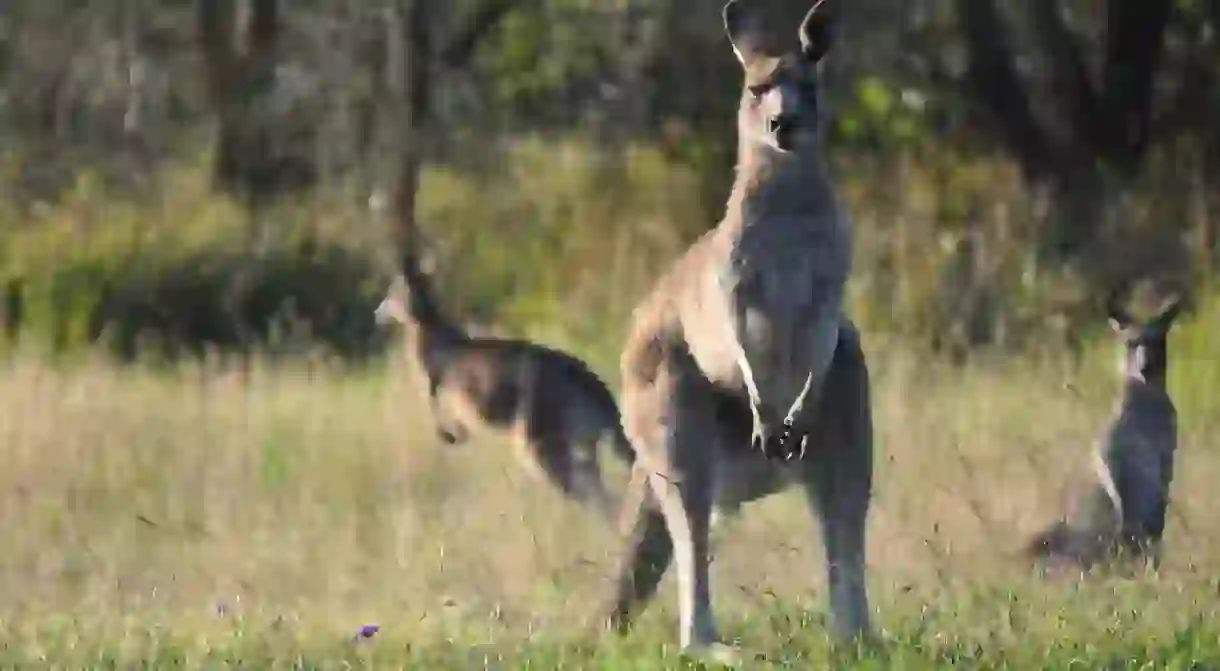The Best Places to See Australia's Incredible Wildlife

Geographically isolated Australia is home to many unique creatures found exclusively down under. While it’s easy to see these native species at a zoo, there is a remarkable thrill that comes from observing an animal in its natural habitat. From kangaroos to koalas, quokkas and cassowaries, these are the best places to see Australian wildlife broken down state by state.
Queensland
Daintree Rainforest
As the third largest bird in the world, you would think the Cassowary would be easy to spot but these elusive creatures are rarely seen in the wild. Your best chance to see one is at the Daintree Discovery Centre in northern Queensland and along the road in Cape Tribulation. Be warned through, shy Cassowaries are territorial so if you’re lucky enough to spot one keep your distance.

New South Wales
Nymboida River
Popular for white water rafting and canoeing, Nymboida River is also home to one of the largest platypus communities on the North Coast. Set up camp at Platypus Flat and hire a canoe, as you have a higher chance of seeing these timid creatures while exploring the river for yourself. The likeliest place to catch a glimpse is between Pollacks Bridge and the Nymboida Coaching Station Inn early in the morning or in the late afternoon.

Victoria
Phillip Island
Phillip Island’s Penguin Parade is the only commercial venue in the world where you can see penguins in their natural environment, and you won’t be disappointed. Watch as little penguins wobble up Summerland Beach and into their burrows each day at sunset – don’t forget to rug up as it does get chilly.

Kennett River
Koalas spend up to 19 hours of the day sleeping up in Eucalyptus trees which makes them hard to spot, however, there is one place in the wild where you’re likely to see these cuddly creatures. Kennett River on Great Ocean Road between Lorne and Apollo Bay is home to numerous Koala colonies. Grey River Road and the area around Kafe Koala are hotspots. Just remember to keep looking up at the trees, you may even find Blinky Bill munching on eucalyptus leaves.

Tower Hill
On the Australian Coat of Arms alongside the kangaroo stands the emu, a large flightless bird which could outrun Usain Bolt. Just like kangaroos, emus are often spotted in grasslands, but the best place to see them is Tower Hill Wildlife Reserve west of Warrnambool. The Reserve was deemed Victoria’s first National Park in 1892 and today it is the ideal place to see emus, kangaroos, wallabies, koalas and echidnas in their natural habitat.

Tasmania
Cradle Mountain
Maria Island
As nocturnal burrowers, wombats are rarely seen, but on Maria Island off the east coast of Tasmania, these fuzzy marsupials can be seen waddling throughout the national park. A short ferry ride from Triabunna will take you to the 115 square kilometre island, where wombats graze undeterred by visitors.

South Australia
Kangaroo Island
If you want to see a kangaroo, the best place to look is on an island named after Australia’s most recognisable marsupial. Just a short flight or ferry ride from Adelaide, is an isolated island where the wildlife population has flourished thanks to the abundance of protected parks and conversation reserves. The best places on the island to spot Kangaroos are Flinders Chase National Park, Lathami Conservation Park and Kelly Hill Conservation Park.

Western Australia
Ningaloo Reef
Between March and August, divers can swim alongside the serene whale sharks at Ningaloo Reef. Growing to 12 meters long, these filter feeding sharks are completely harmless and swimming alongside them is a tranquil experience. Depending on the seasons you may ever see humpback whales, dugongs and manta rays passing through.

Rottnest Island
Just off the coast of Perth, is an island paradise populated by the smiling Quokka. Native to Western Australia, these curious nocturnal marsupials are anything but camera shy and often pose with tourists for selfies. While you can be fined for feeding Rottnest Island’s furriest residents, the island offers tourists the chance to see these creatures in the wild.

Northern Territory
Adelaide River
While no person in their right mind would want to encounter a croc in the wild, there are a few places where you can safely view these prehistoric predators. Swarming with saltwater crocodiles including Brutus who once chowed down a bull shark, Adelaide River offers cruises where visitors can see crocodiles jumping out of the water for food.














